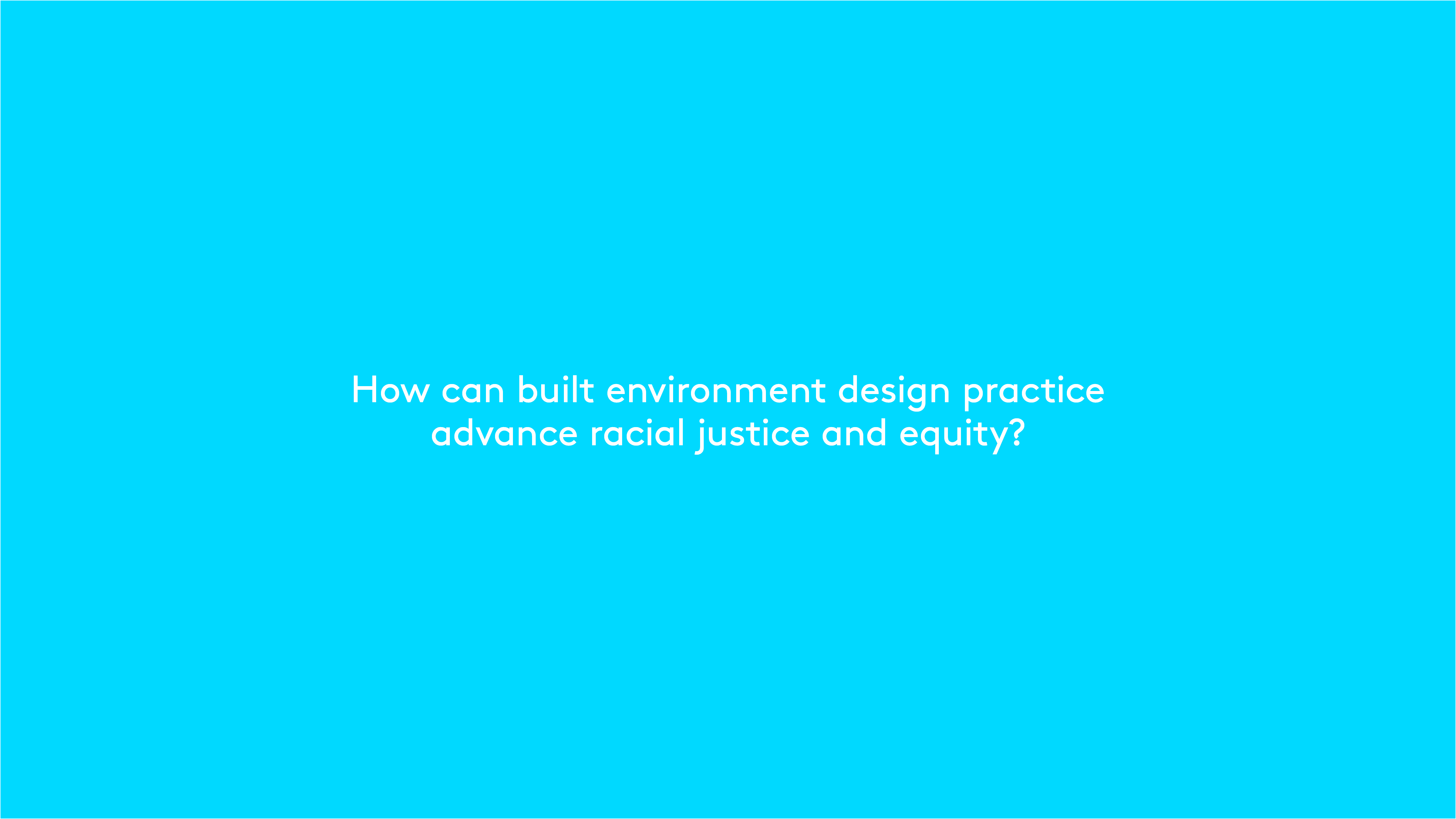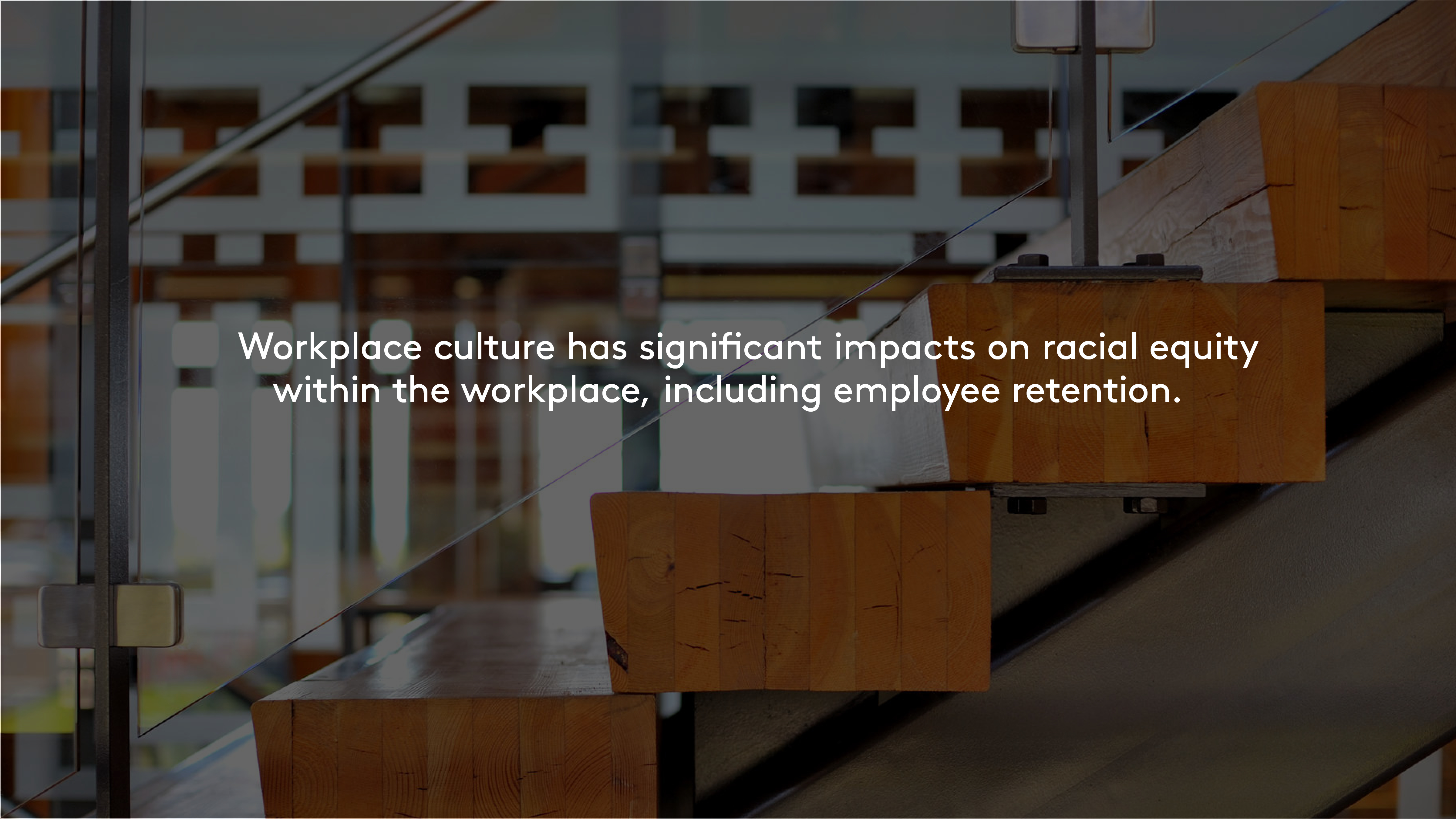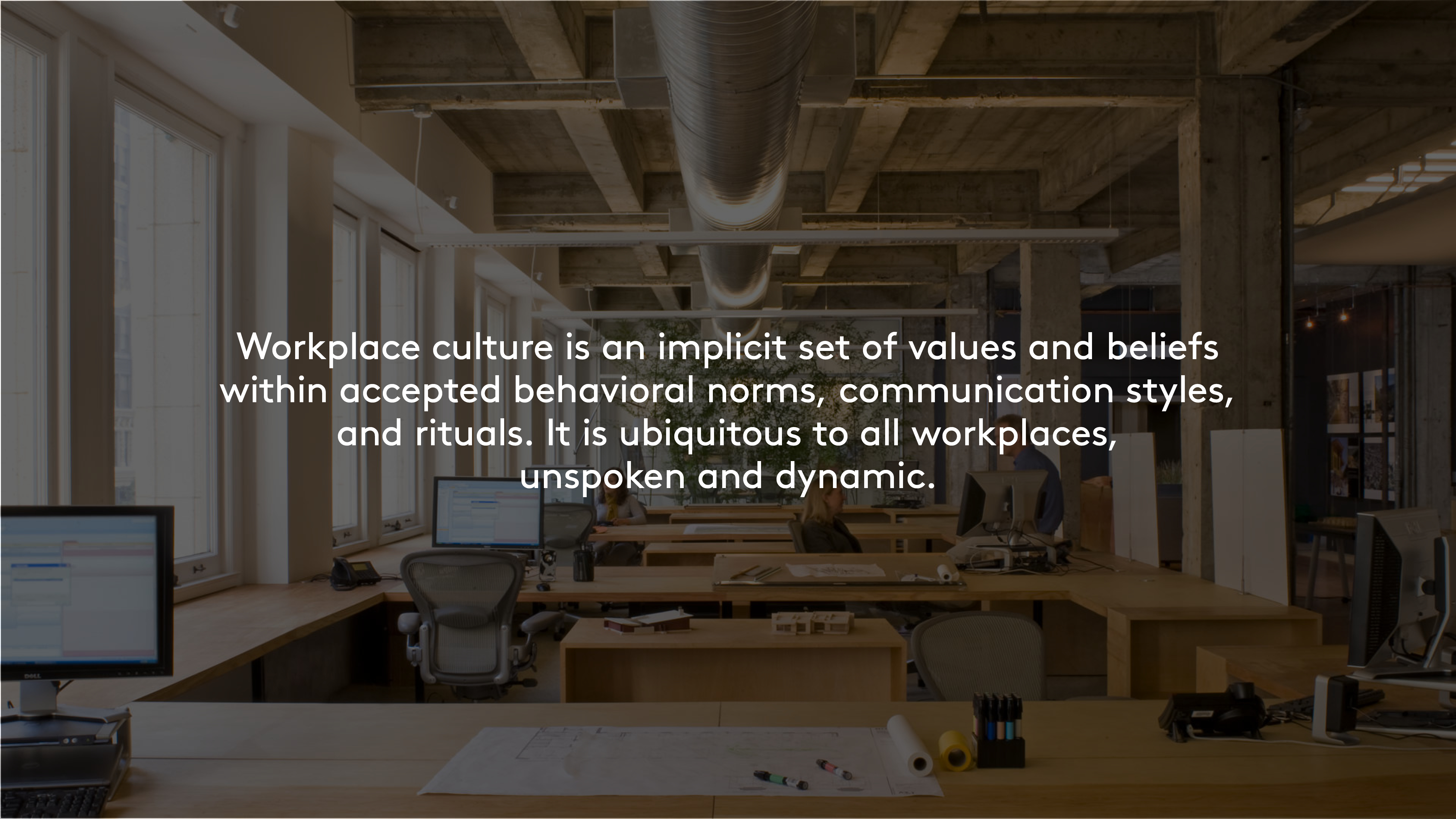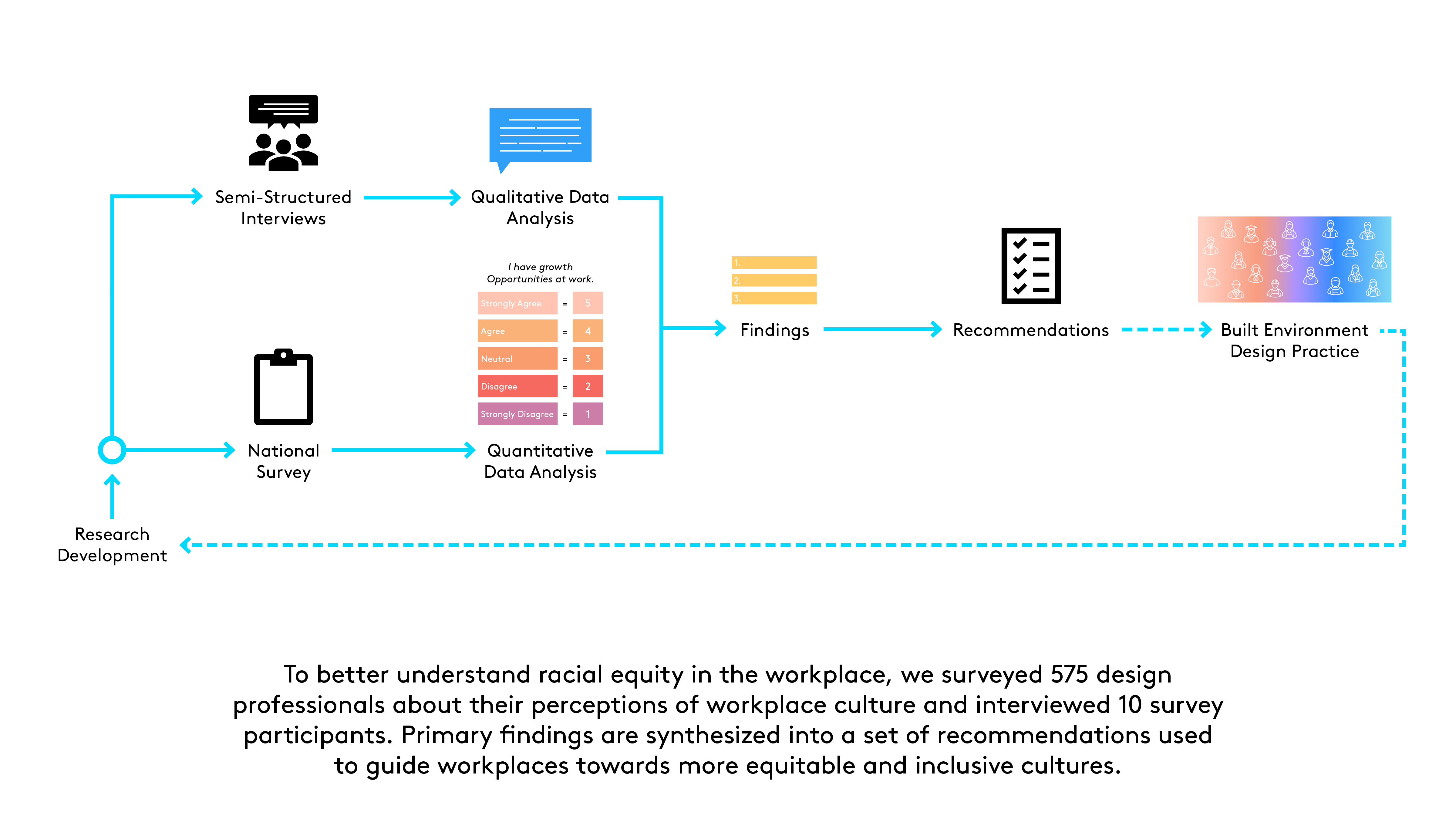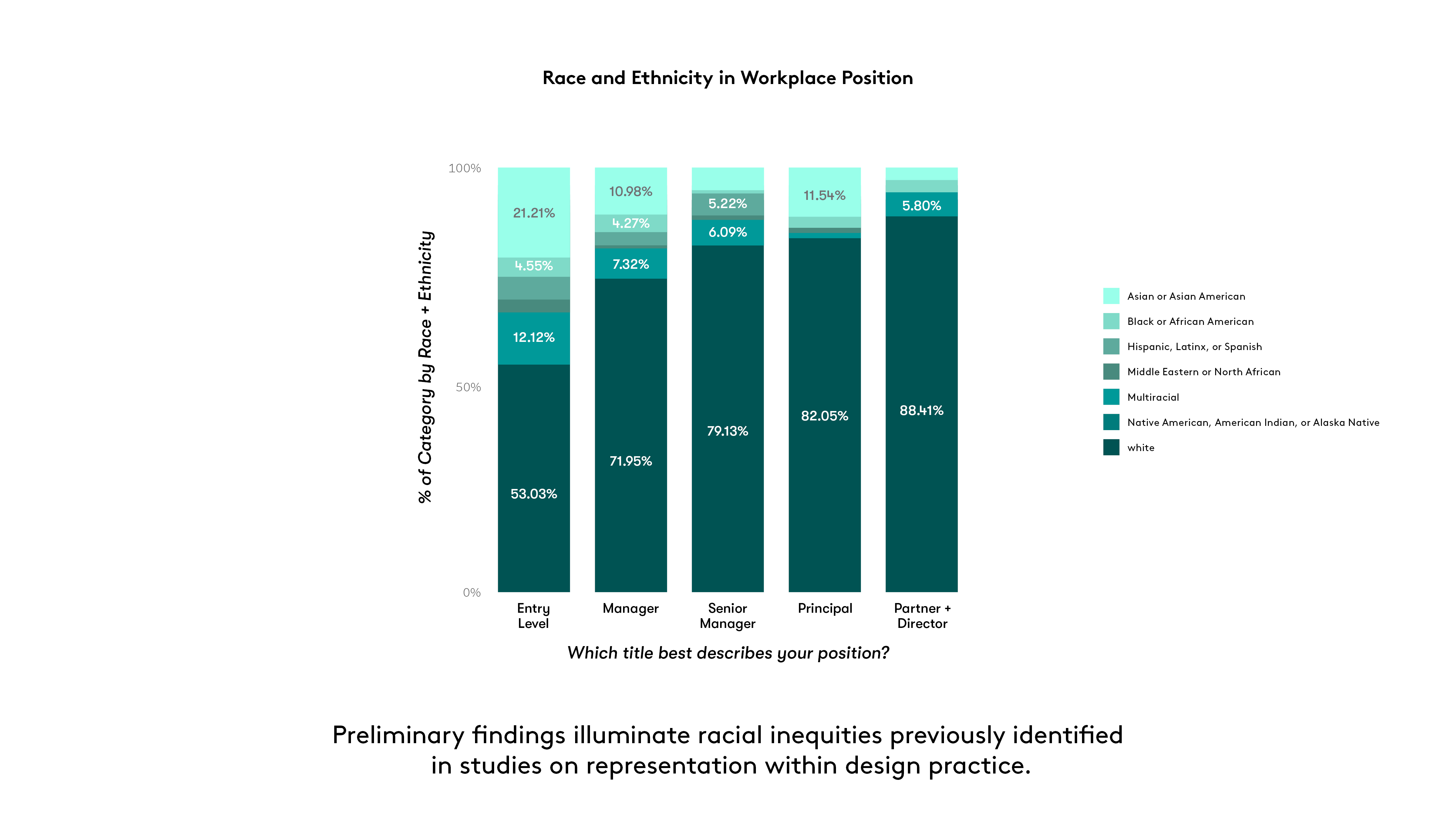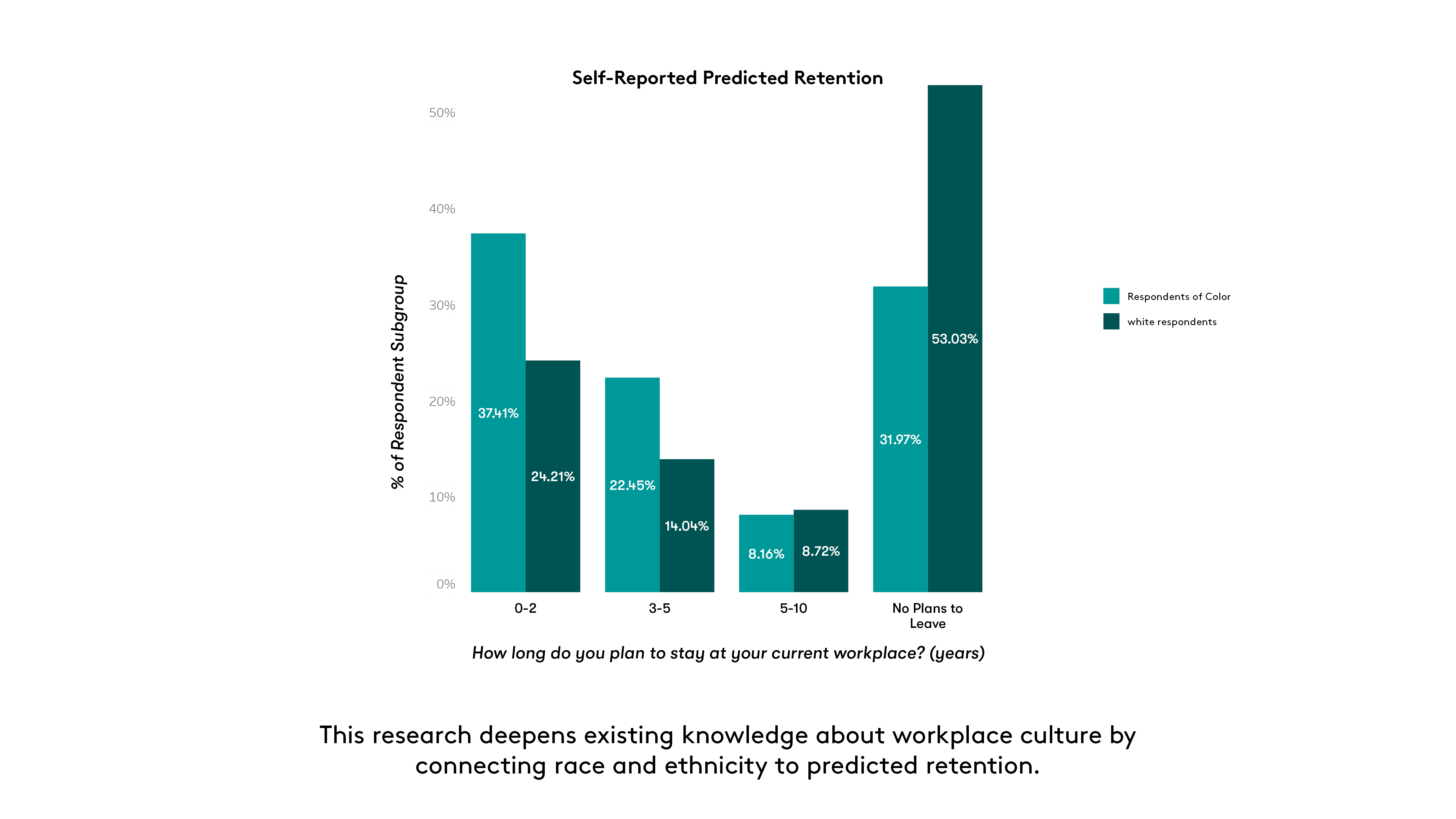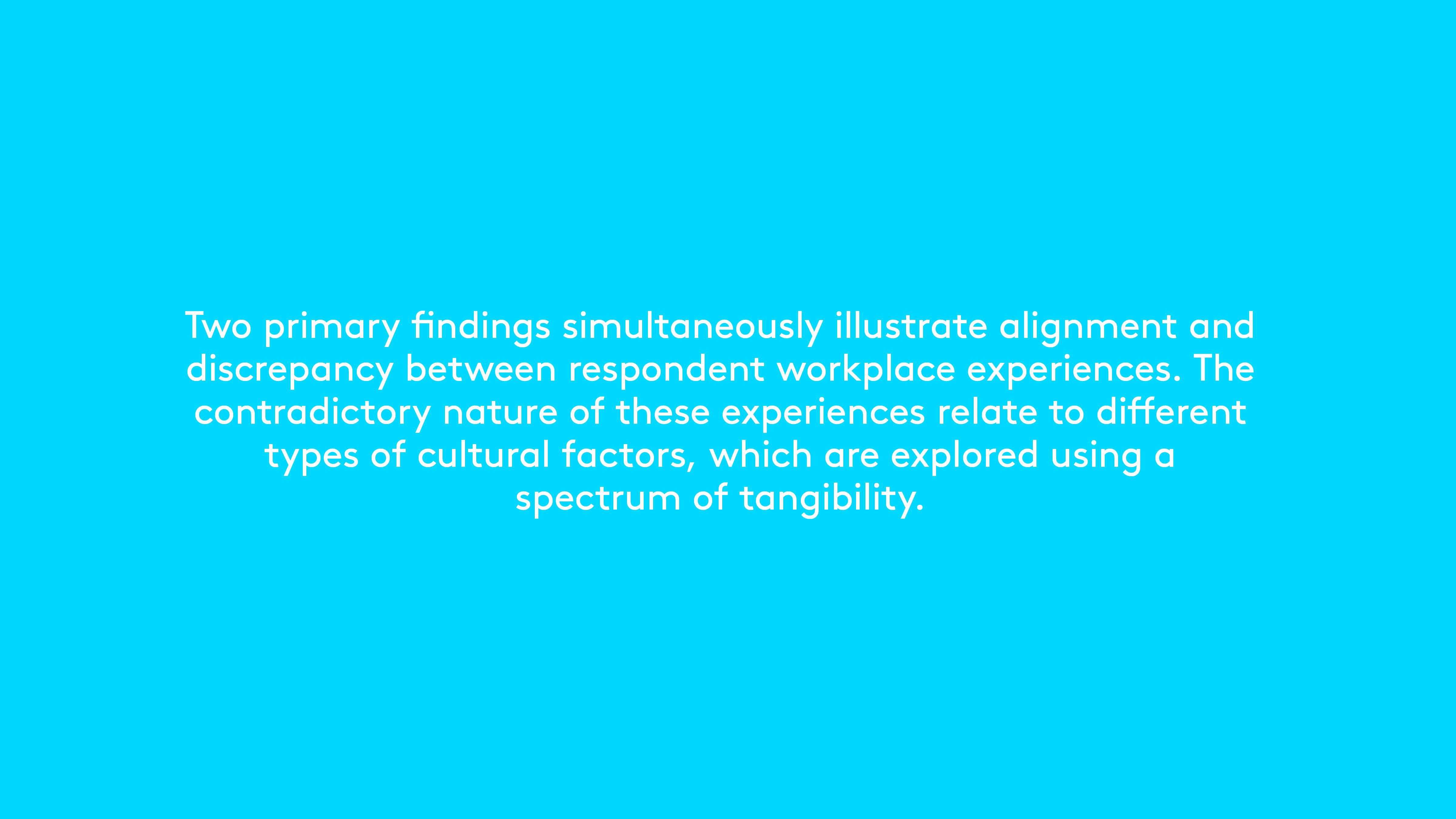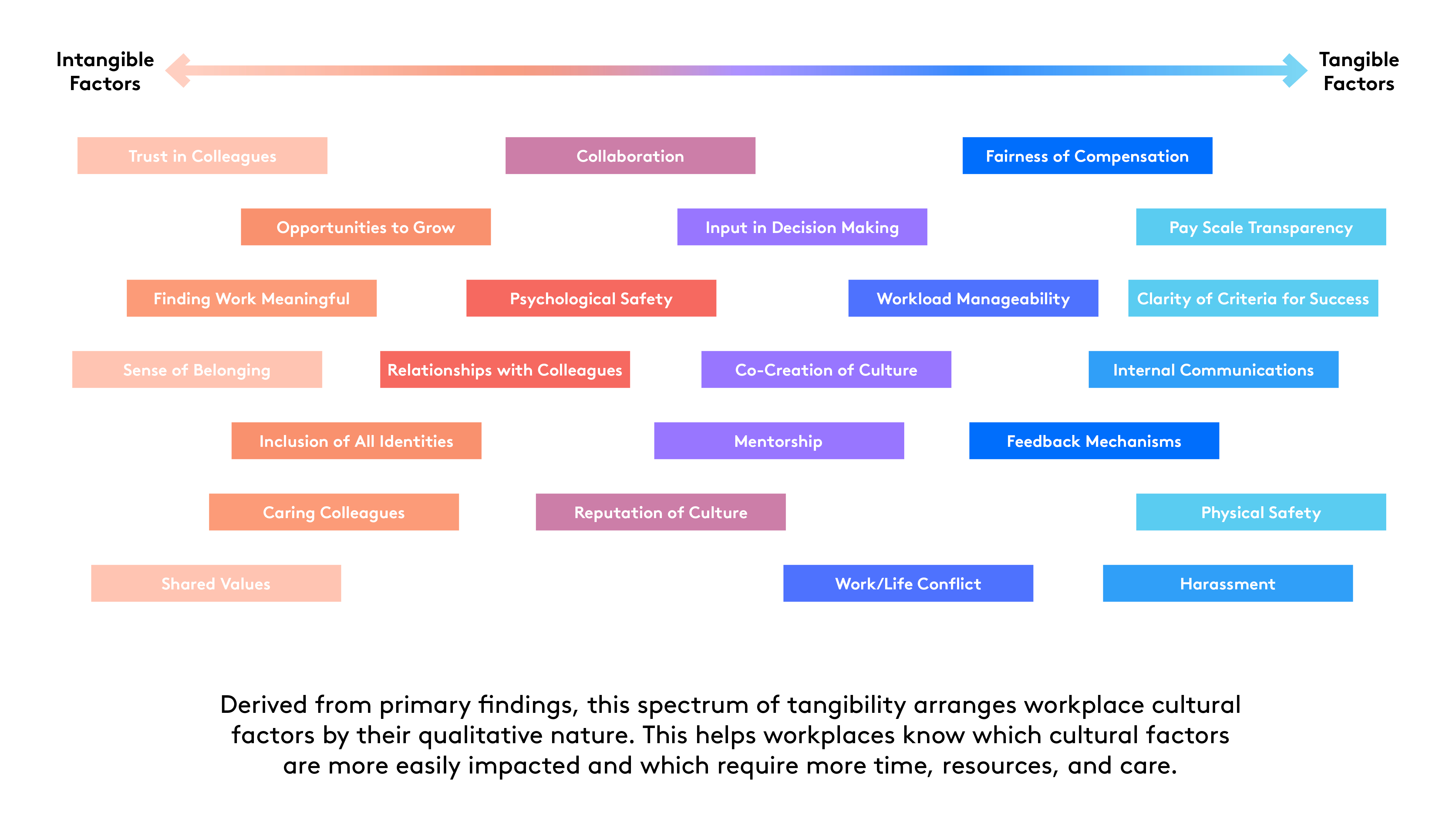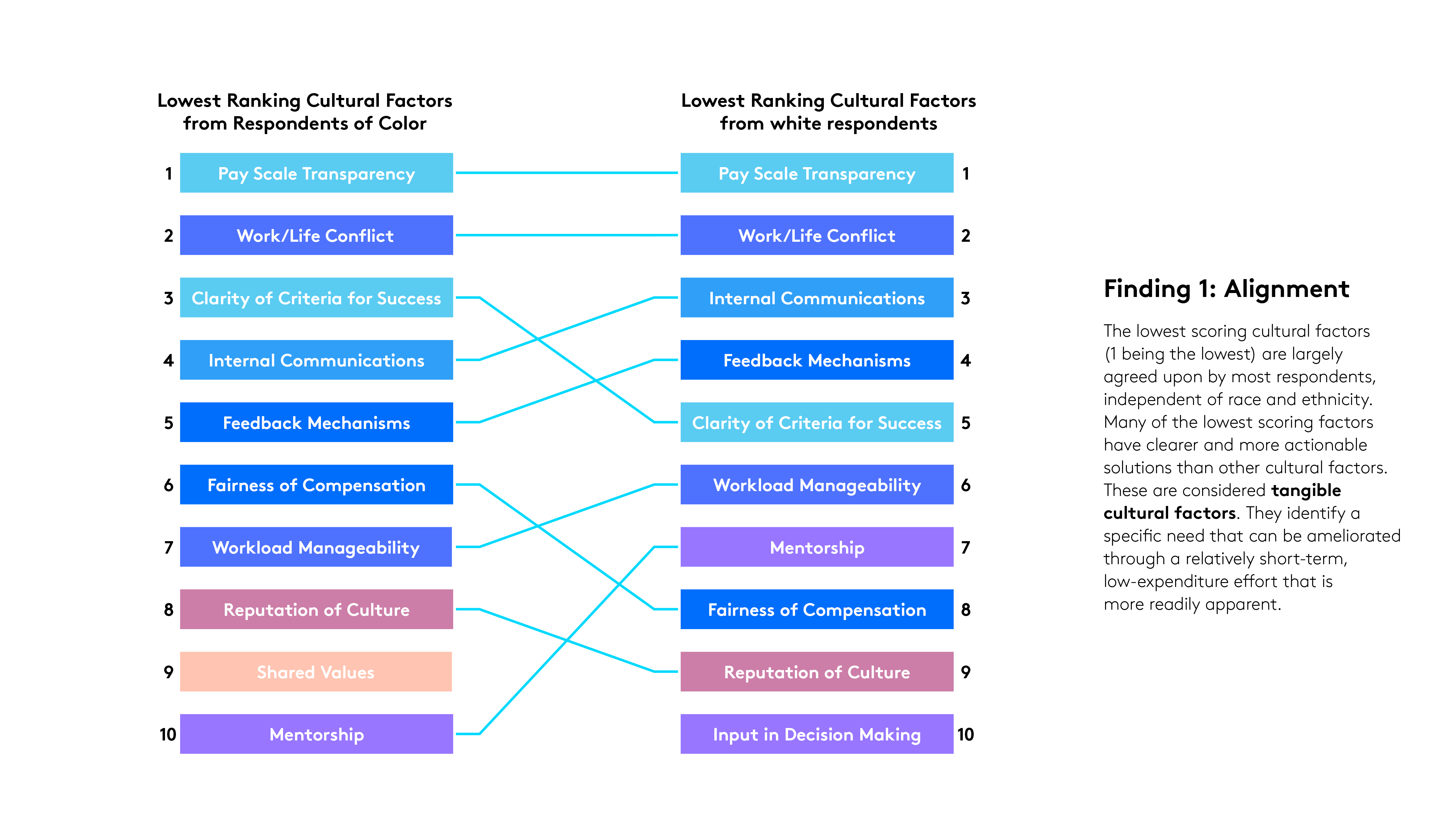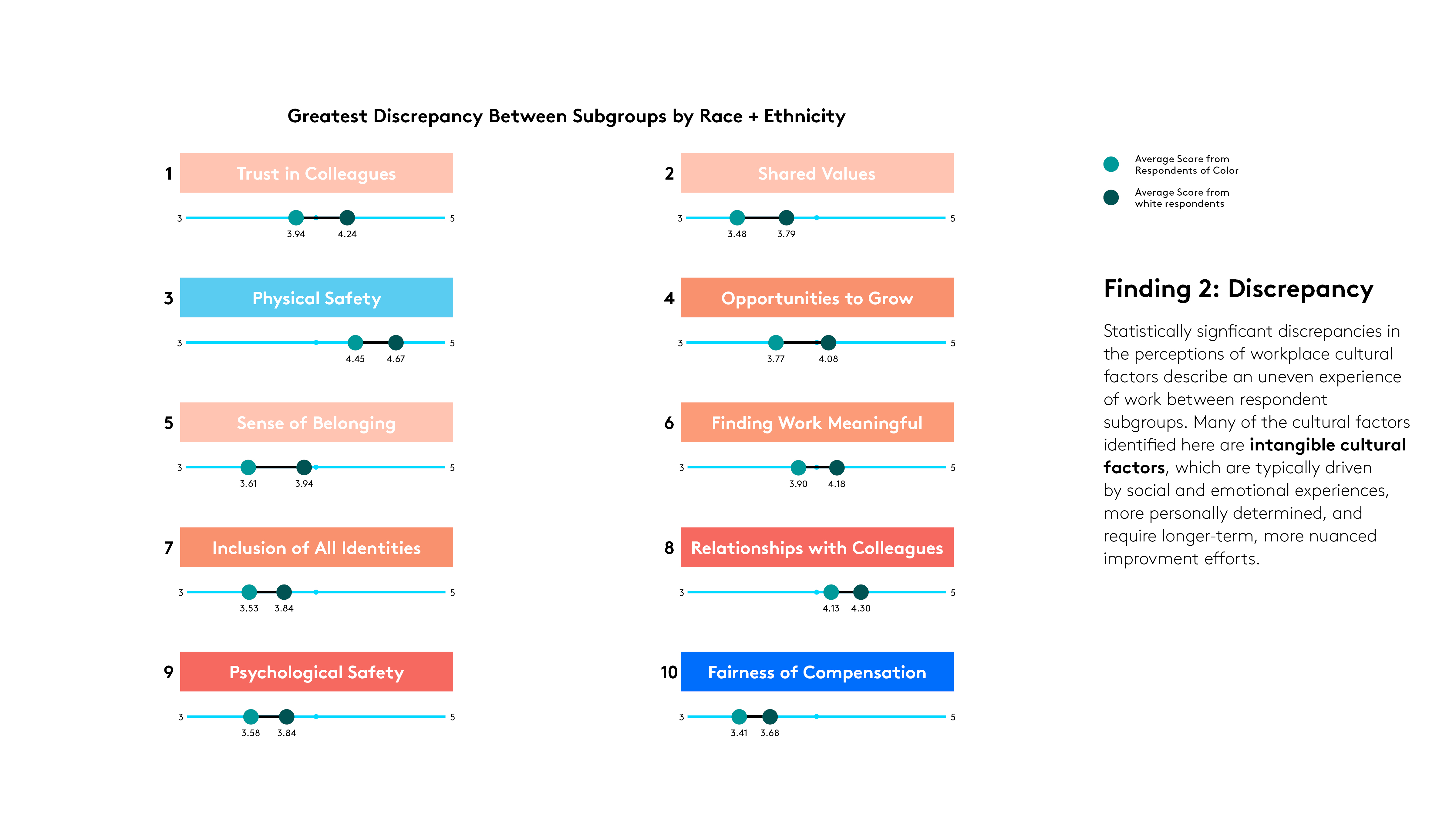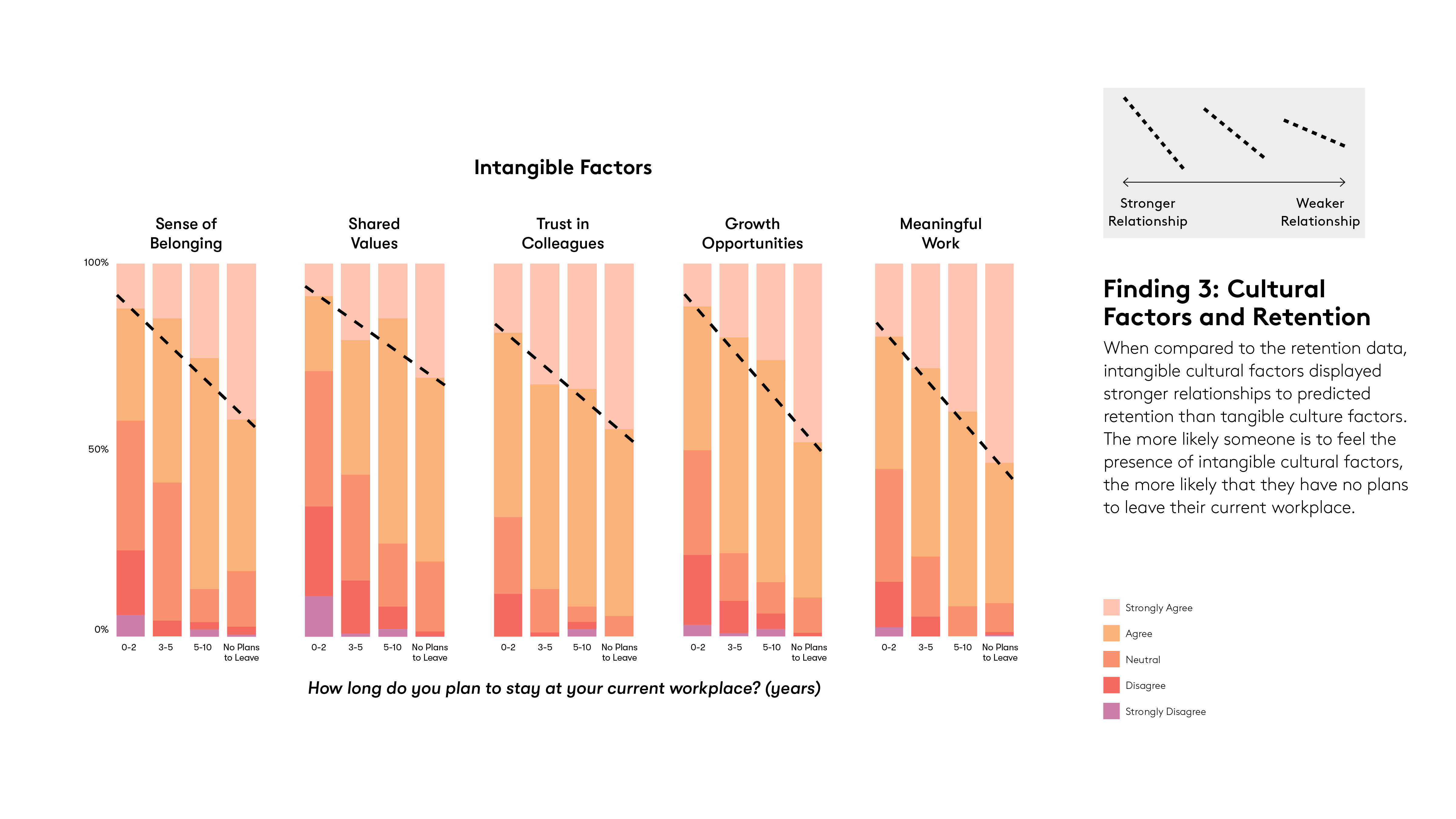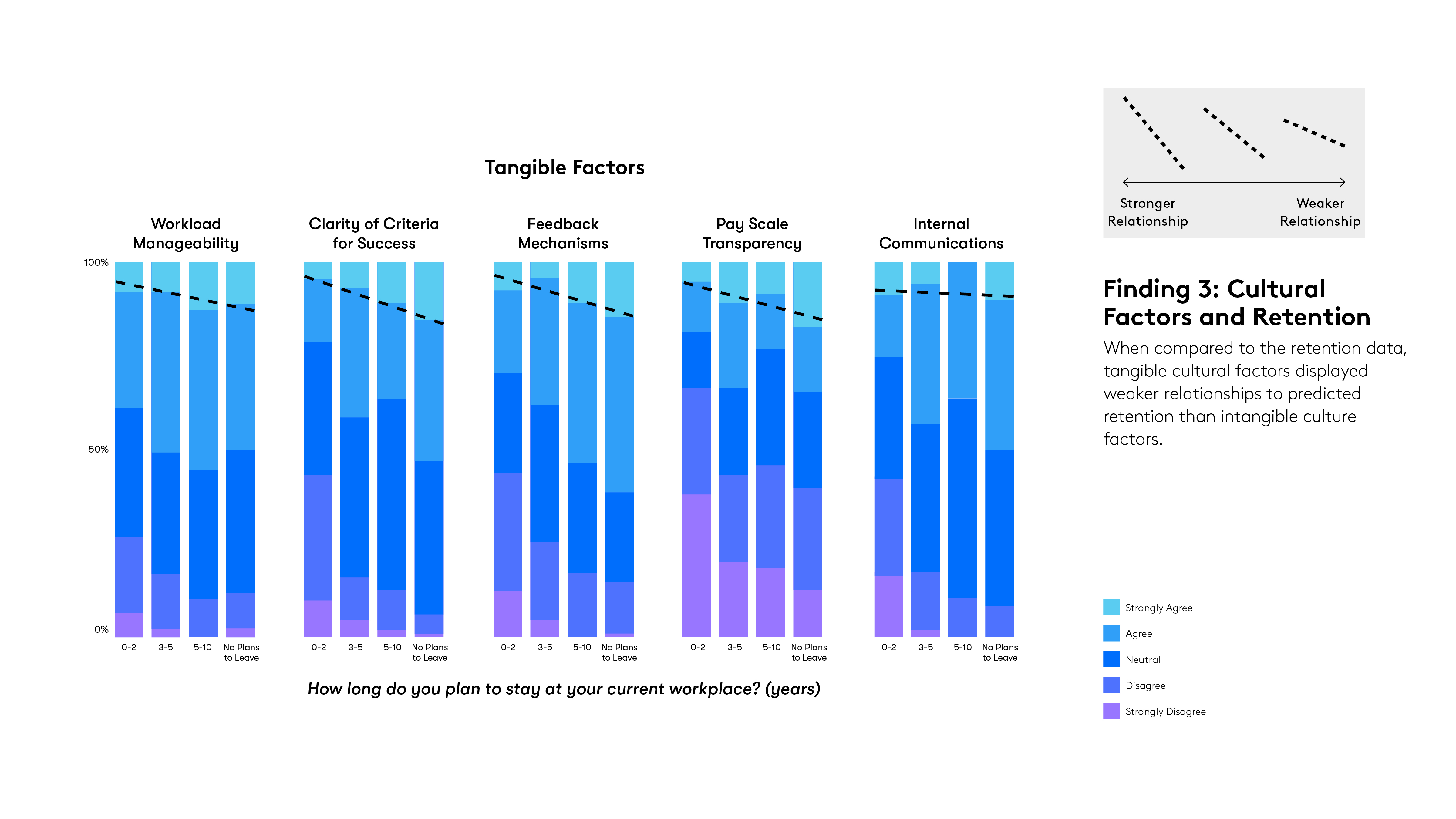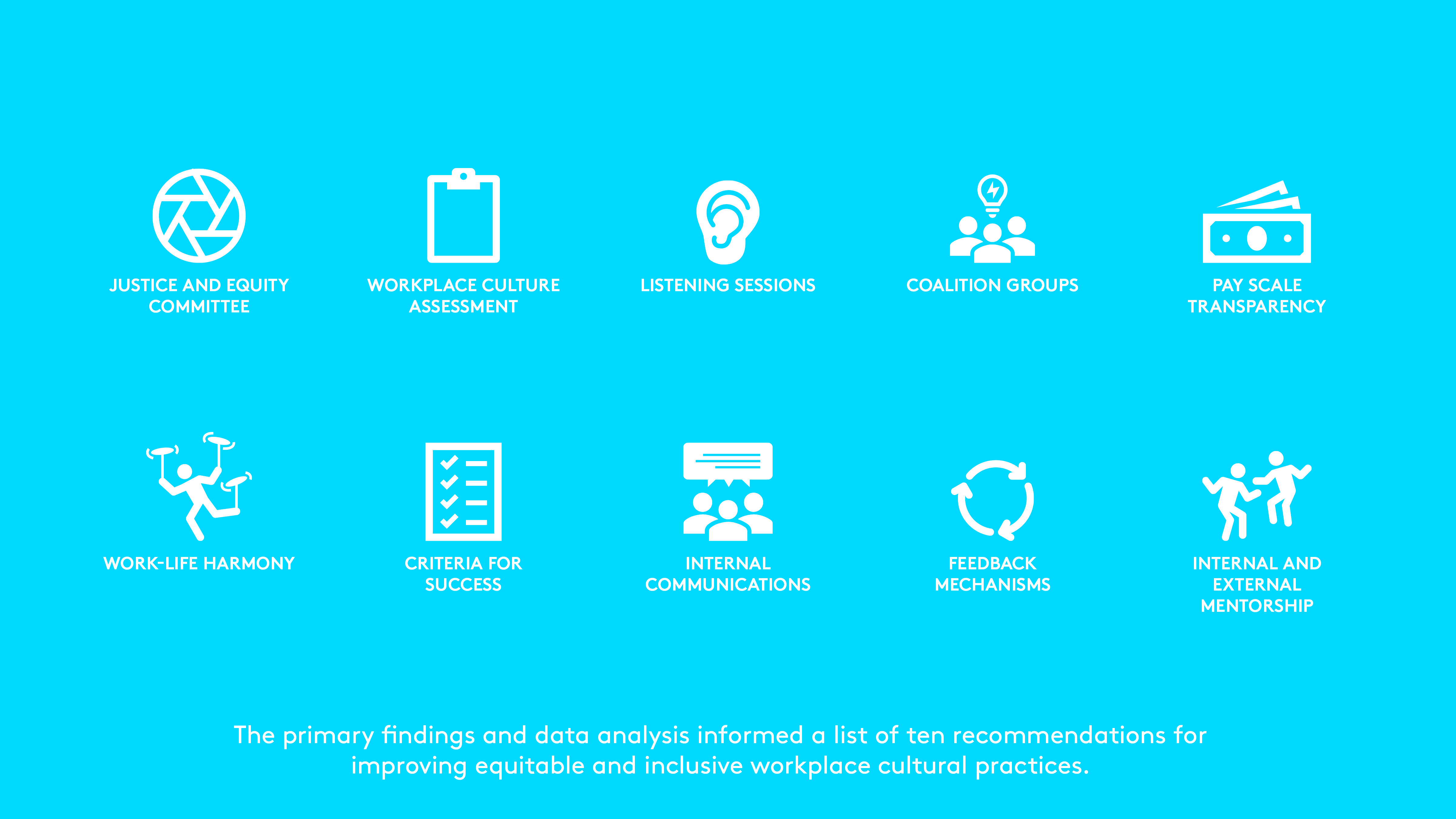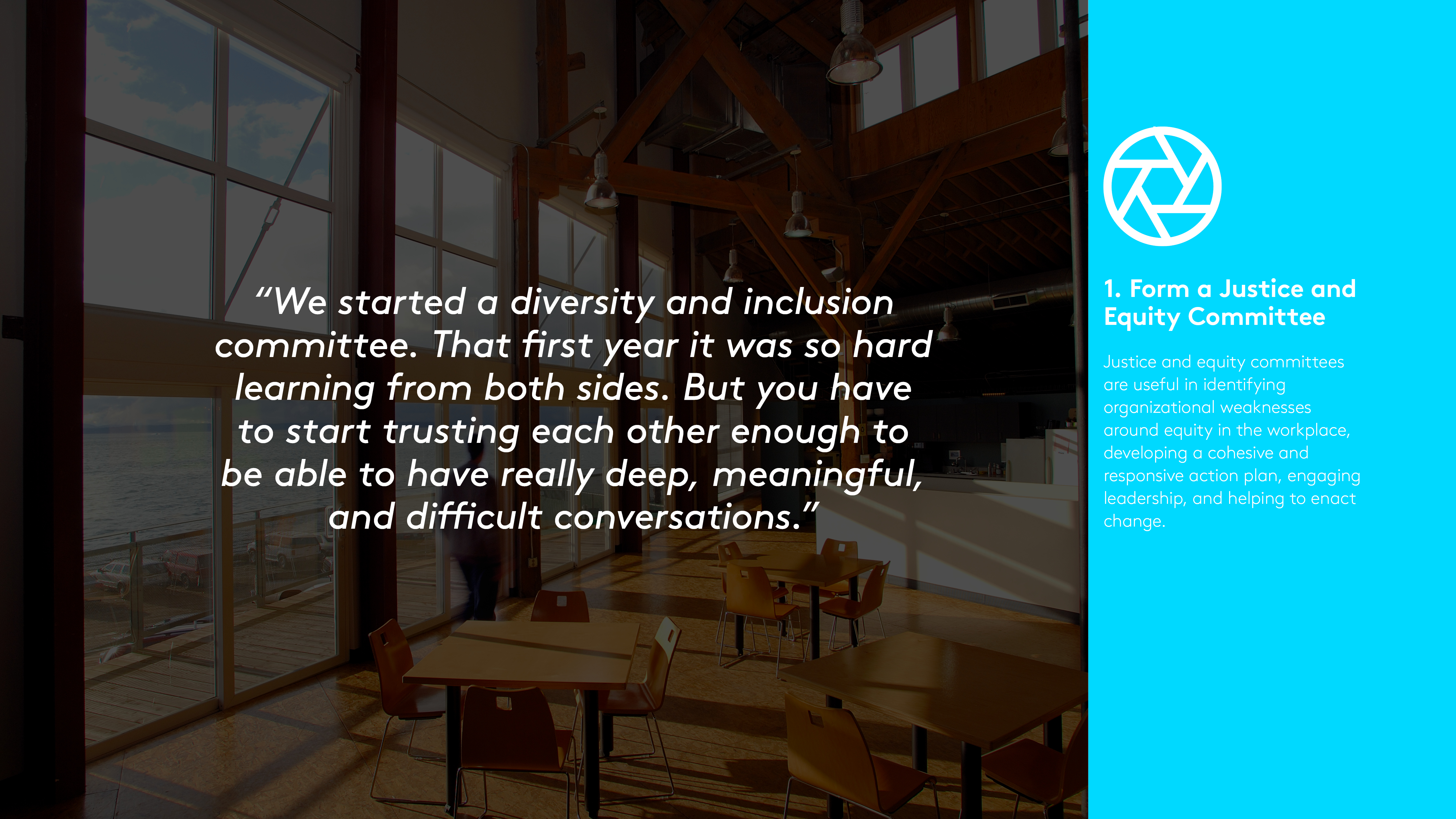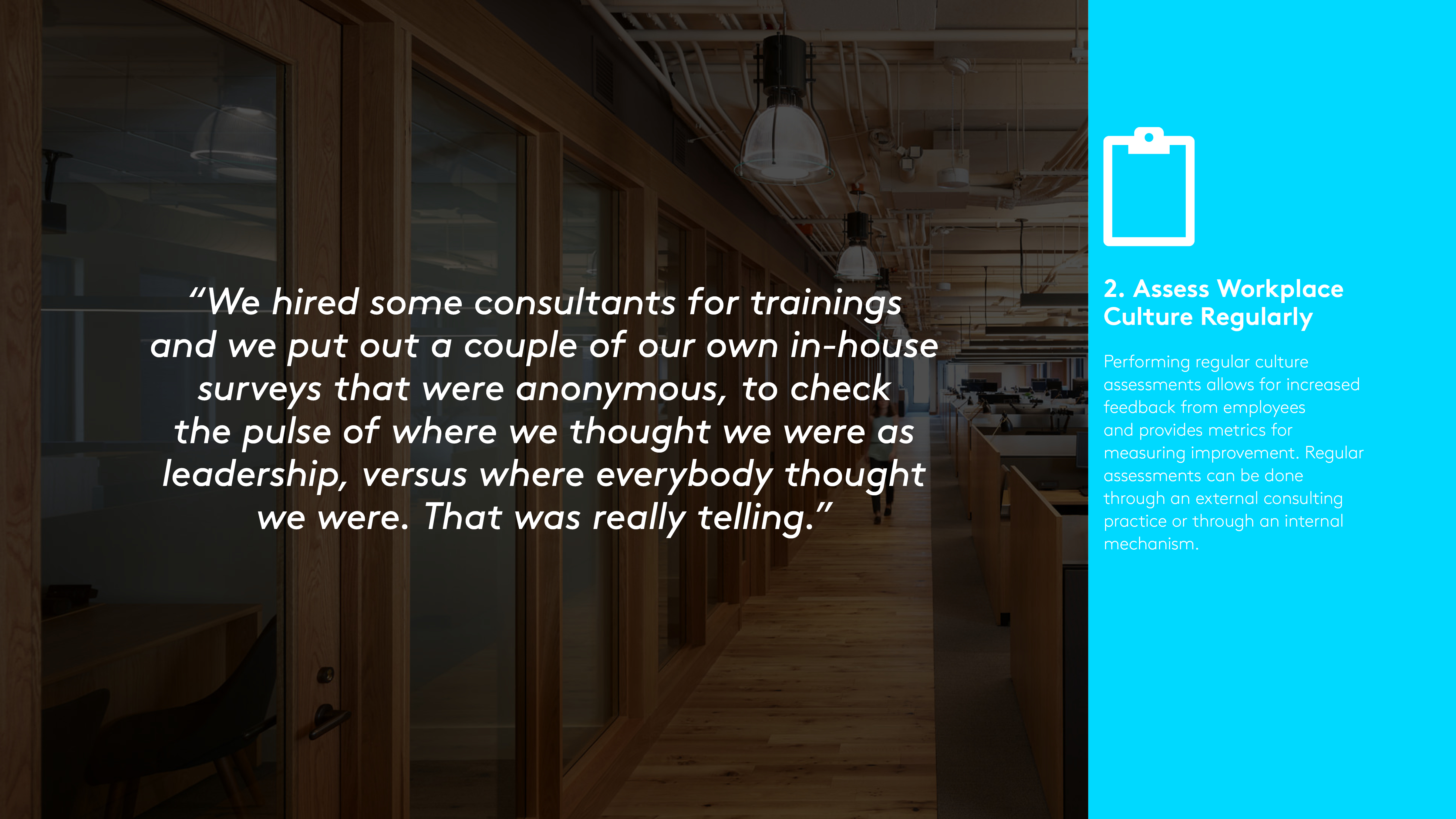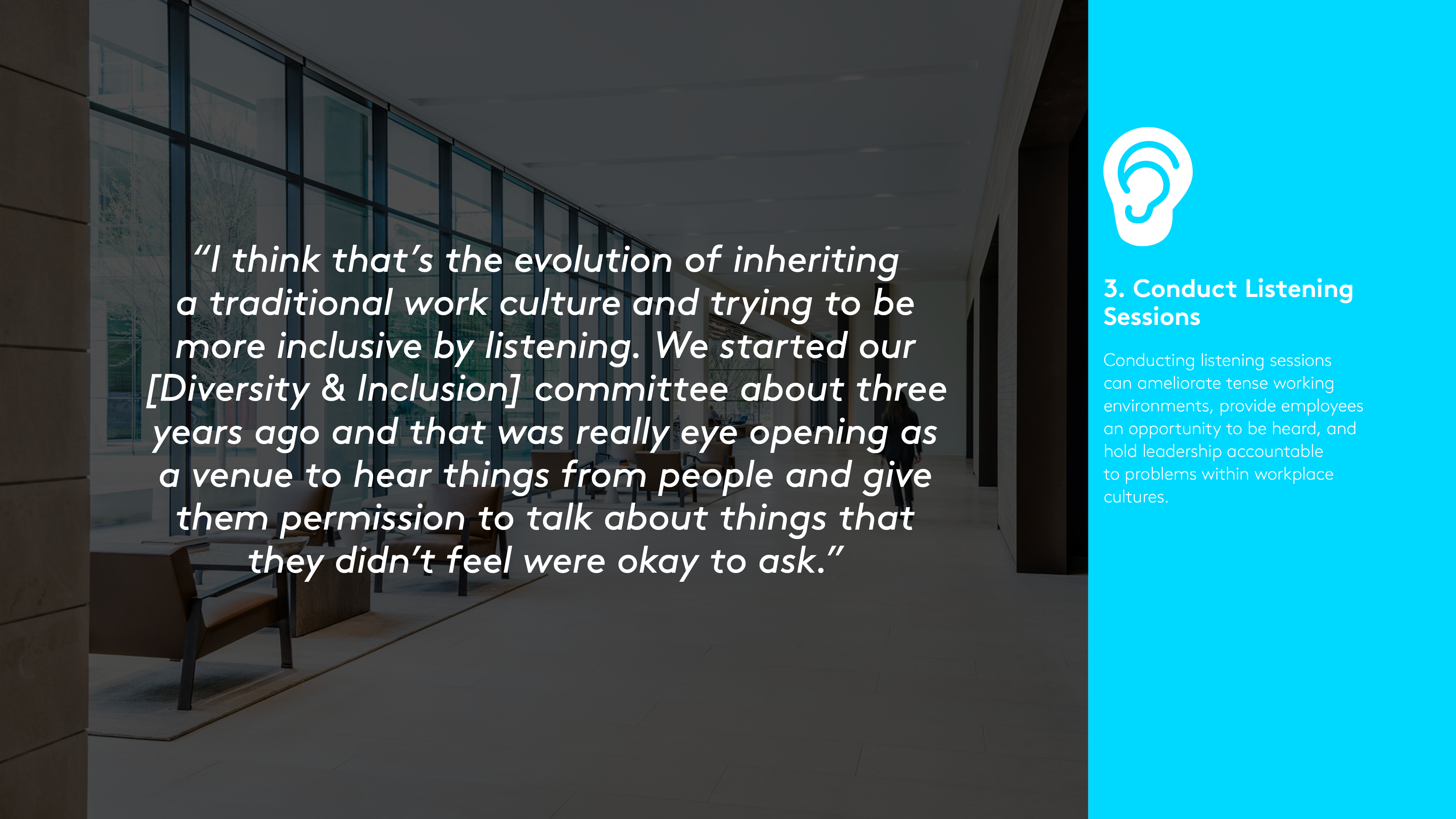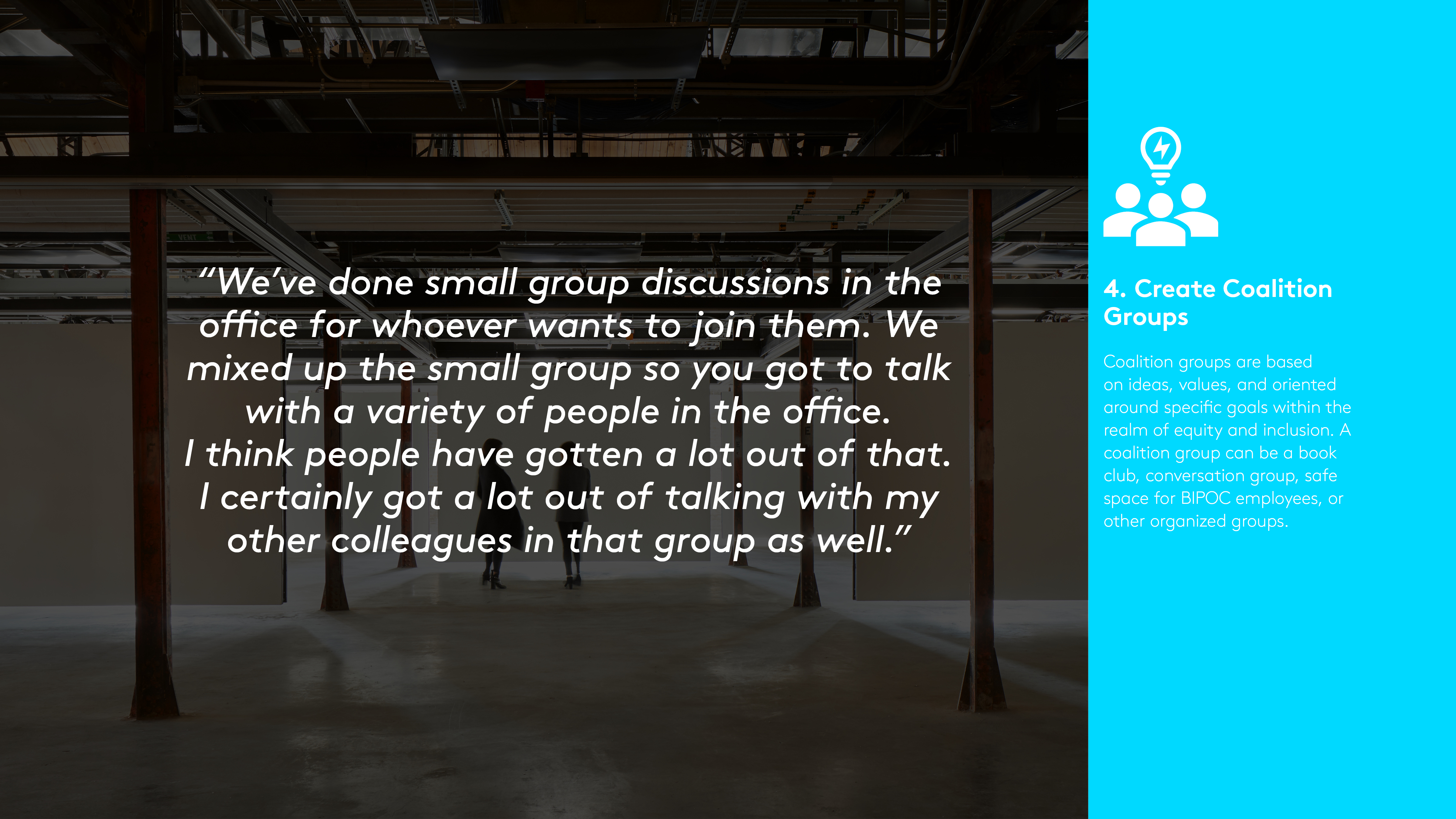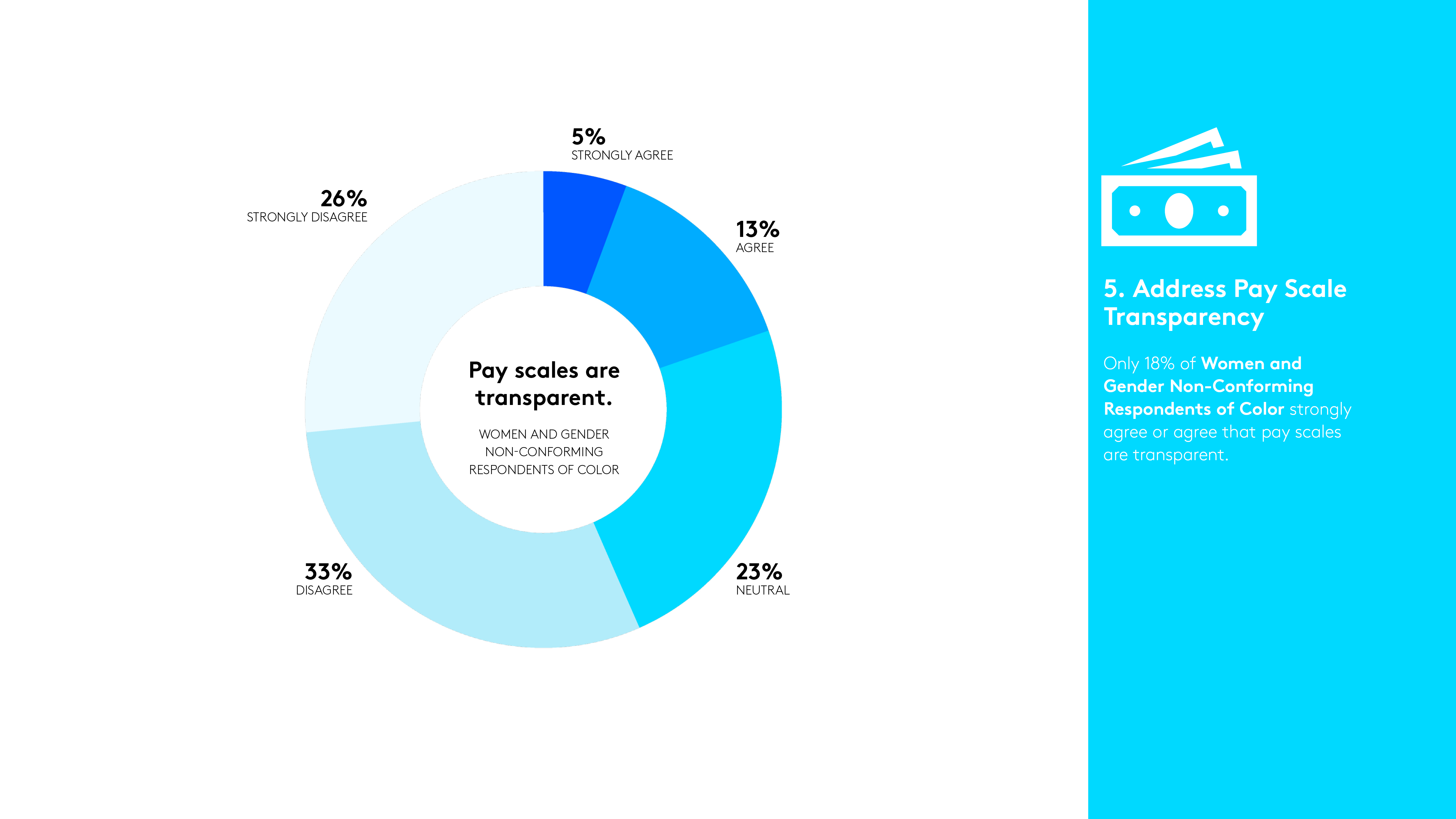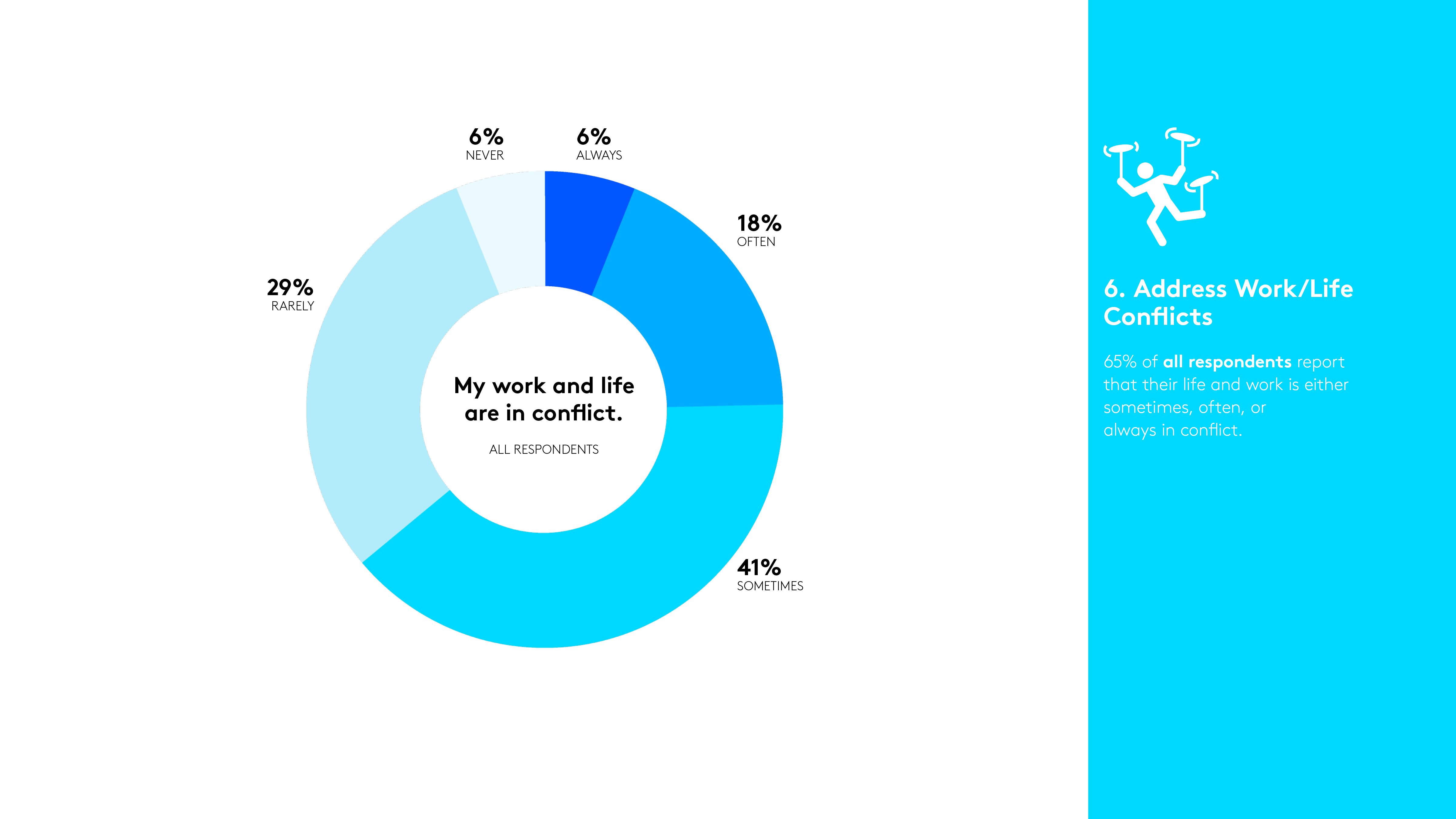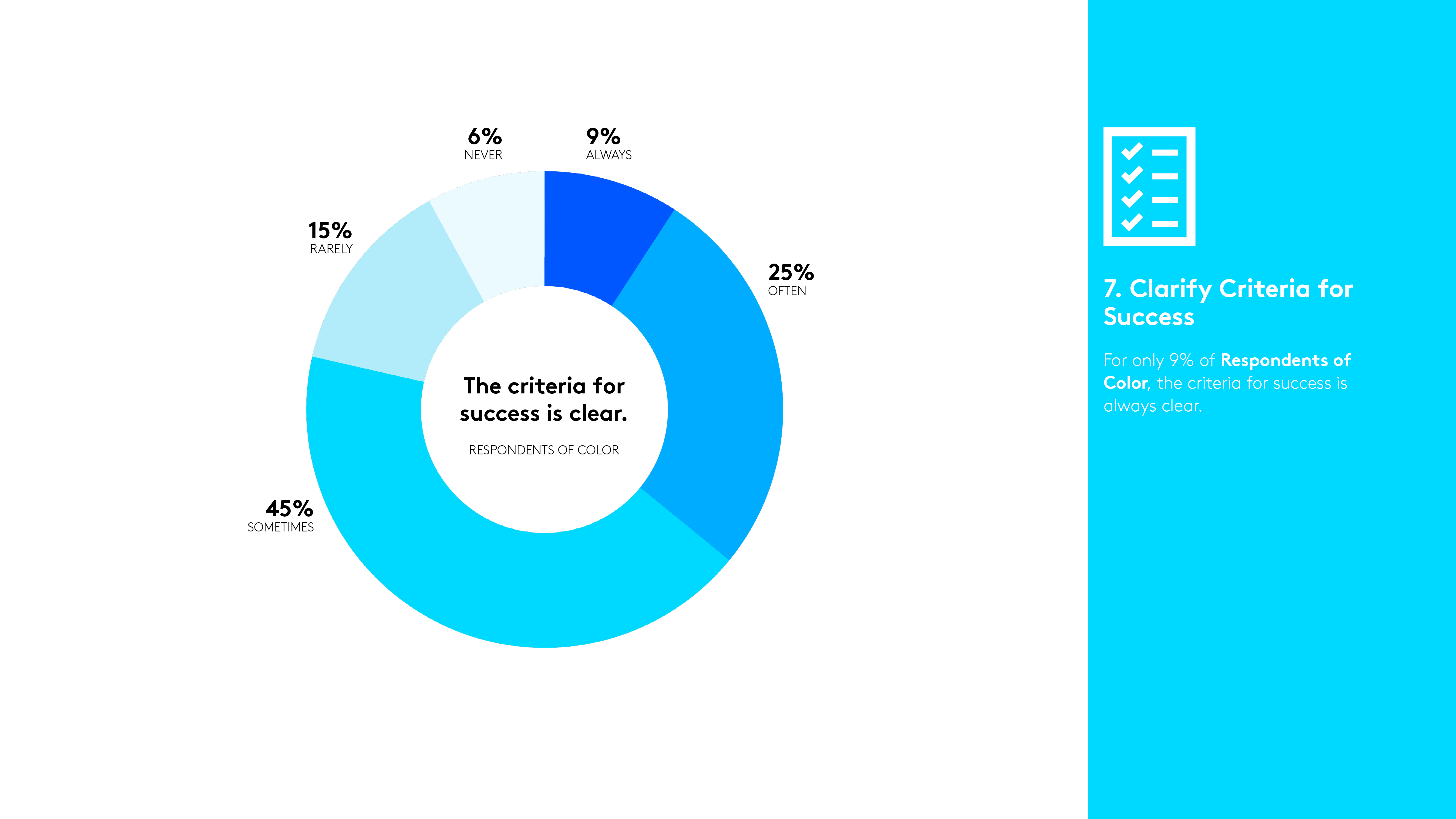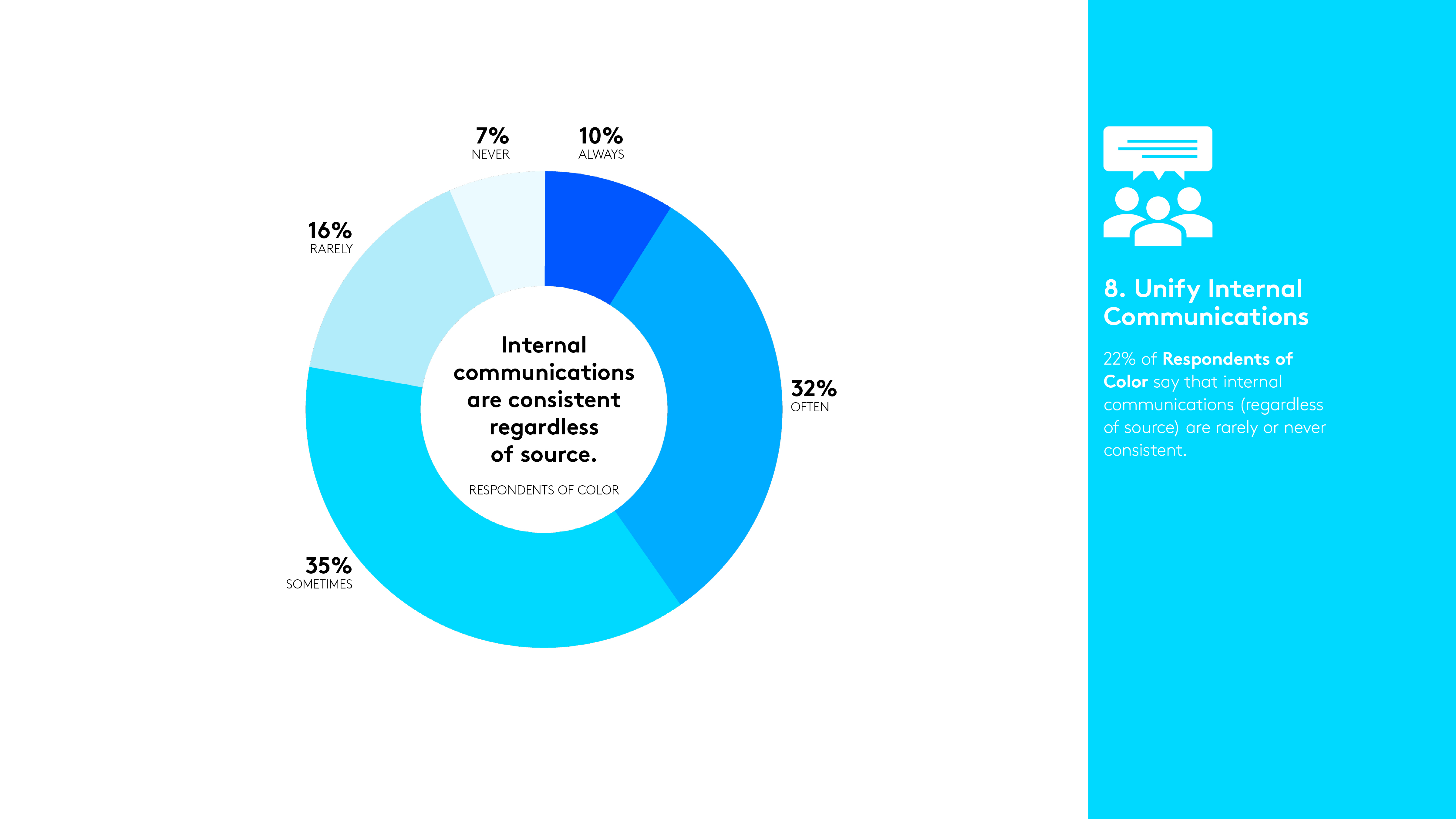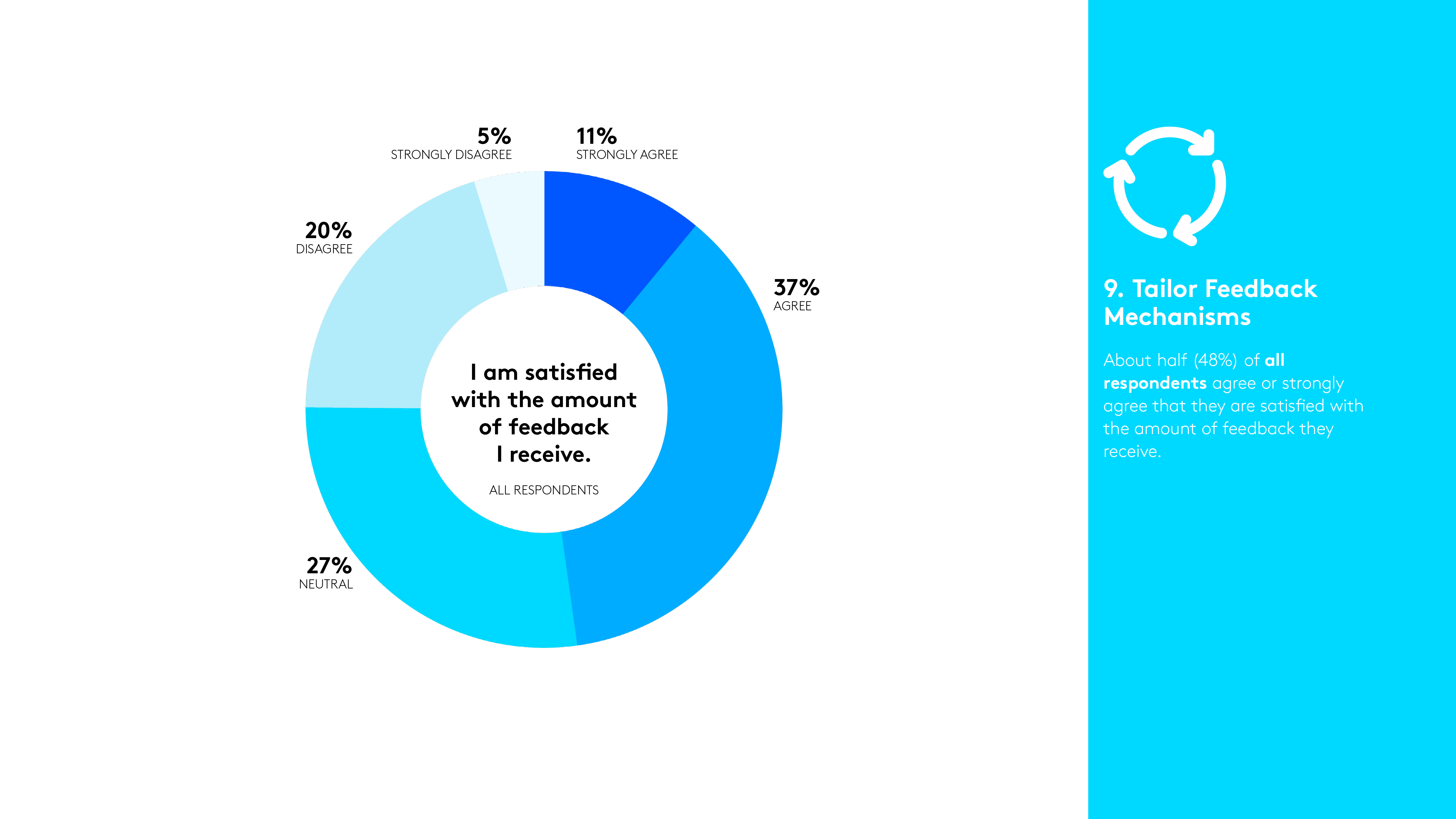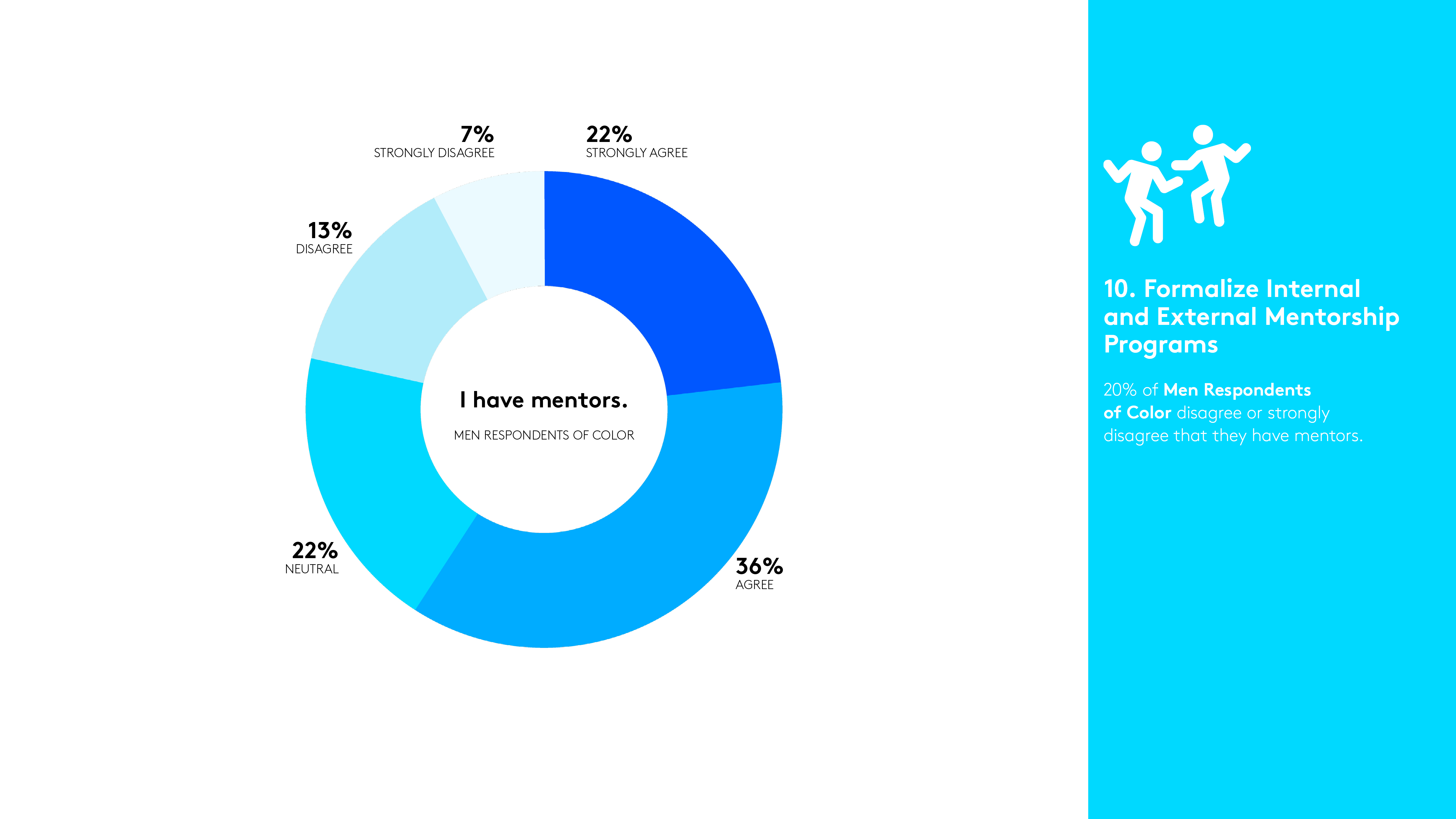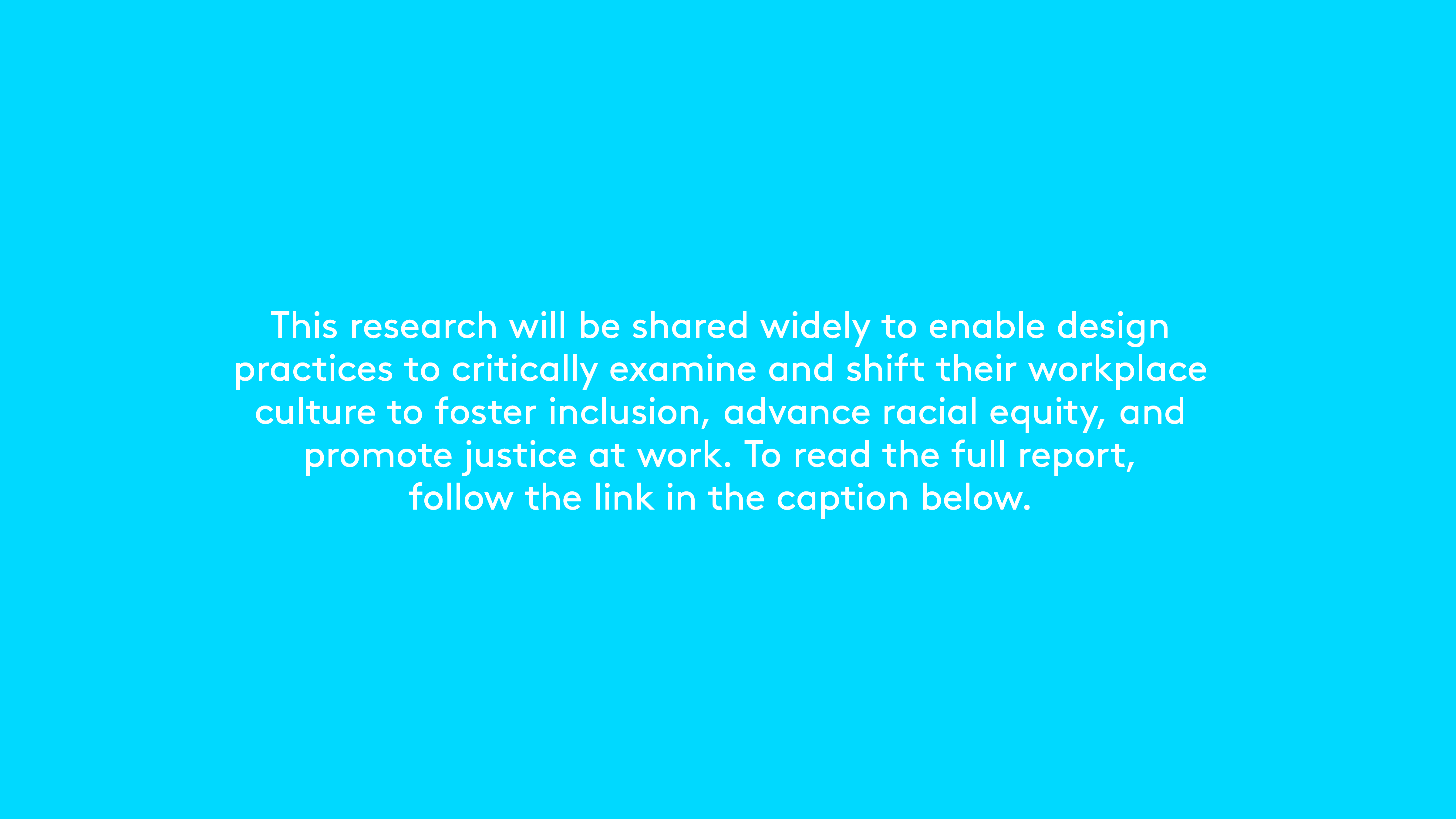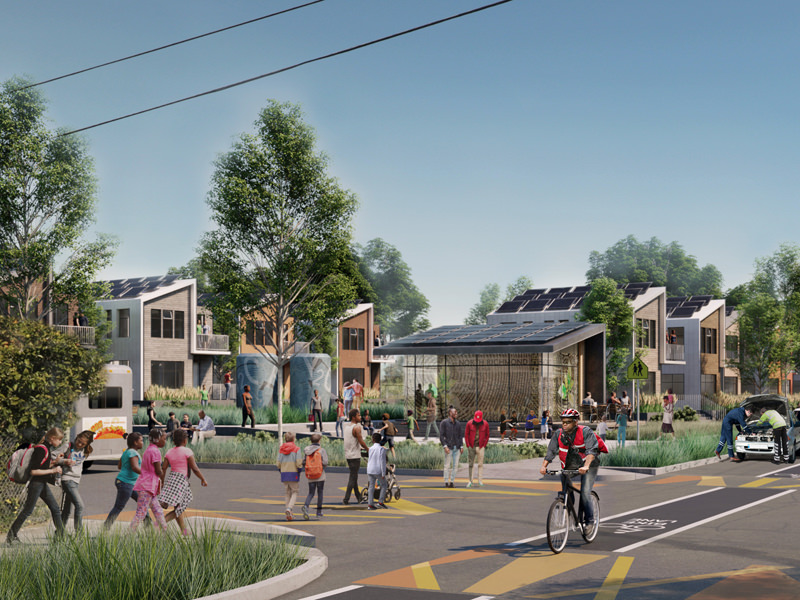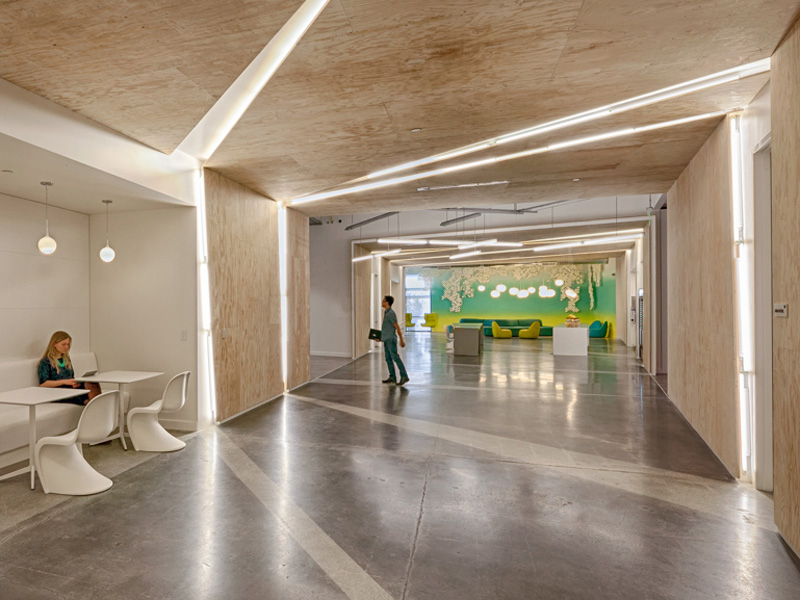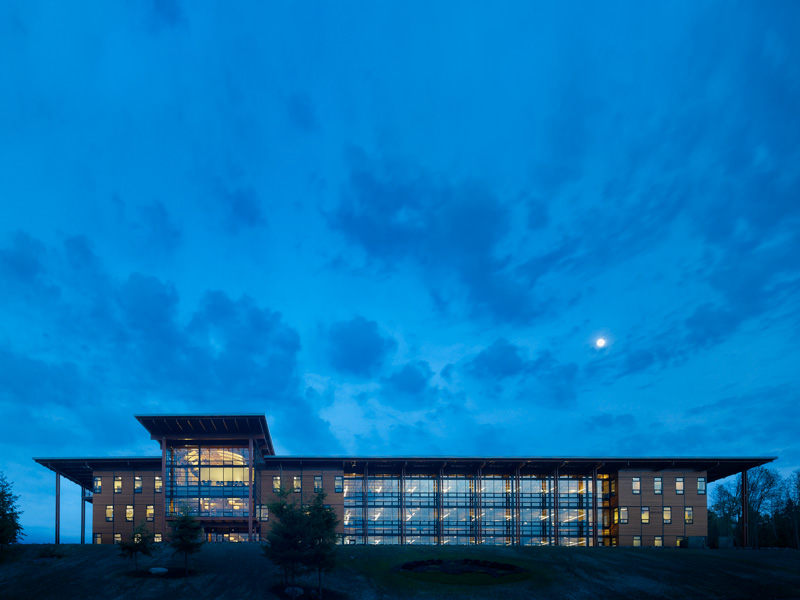Creating Inclusive Culture
Vision
Built environment design professionals are responsible for myriad spaces that contribute to positive or negative effects on societal health, well-being and happiness. Who designs the built environment (representation), and how they do it (equitable practice) matters. Improving the representation and retention of design practitioners from historically excluded racial and ethnic minority groups and developing more equitable and inclusive workplace practices is imperative to reduce the negative effects of white supremacy in built environment design practice and the built environment itself.
Many racist barriers in need of removing exist within the design professions, from K-12 to post-secondary education to professional development and leadership. The scope of this research focuses on workplace culture as it relates to the retention of employees from underrepresented racial and ethnic minority communities.
Research
This R+D effort investigated perceptions of workplace culture within built environment design professions including architecture, interior design, landscape architecture, and urban design and planning. A review of existing literature on equitable workplace practices informed the research goals, questions and methods. A national anonymous survey of 575 design professionals collected valuable insights into workplace cultural perceptions and a series of interviews provided additional anecdotal data. Survey respondents used Likert scales to rate their agreement on the presence of 23 workplace cultural factors, determined through the initial literature review.
Survey responses were analyzed along axes of respondent identity including race, ethnicity and gender. Data analysis revealed findings with simultaneous alignments and divergences between subgroups. In the first finding, most employees independent of race, ethnicity and gender agree on the workplace cultural factors that require the most improvement. Most of these factors are defined here as tangible factors, as they are more concrete, specific and can be changed relatively quickly. In the second finding, certain factors received scores with high degrees of discrepancy between respondent subgroups, indicating an uneven experience of work. The factors identified in the second finding are more closely related to longer predicted retention rates and are mostly intangible factors, here defined as factors which involve personal feelings and emotions that change relatively slowly.
Looking Forward
The primary findings informed a list of ten recommendations created to improve workplace culture through a lens of racial equity and justice. The list is intended to be used as a menu of options for workplaces that are interested in equitable workplace culture but have specific needs or are at different stages of engagement. The report and recommendations will be circulated widely in order to have an industry-scale impact for the short- and long-term advancement of racial justice in the built environment design professions.
To learn more and aid the effort to positively shift design practice, read the full report.


